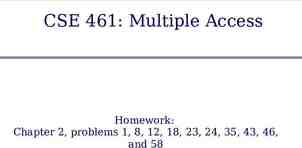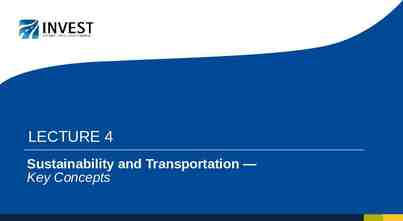Public Health Financing CDC Office for State, Tribal, Local and
38 Slides4.10 MB
Public Health Financing CDC Office for State, Tribal, Local and Territorial Support and CDC Procurement and Grants Office June 2013
Learning Objectives Understand and describe Major sources of public health funding Major players and their roles in the budget process The role of Congressional intent and funding parameters on the flow of funding from the federal to the state, tribal, local, and territorial levels, and beyond Sources of federal budget information How grants and cooperative agreements are used to put appropriations into practice How a funding opportunity announcement (FOA) is used to make potential applicants aware of funding availability
The Federal Budget Process
BACKGROUND
How Public Health Is Financed Most common sources Federal funds Mixture of population-based formula grant programs, incidence- or prevalence-based formulas, and a series of competitive grants State and local funds Varies dramatically based on state governance and health department structure/activities County and city revenues Also quite variable Trust for America’s Health. Investing in America’s Health. March 2012. http://healthyamericans.org/report/94/
State Health Agency Funding, by Source (n 48) O ther State Other Sources 0 Fees and Fines 0 Medicare and Medicaid 4% Funds 16% State General Funds 23% Federal Funds 0 As of Sept 2011
Factors Influencing Flow of Funding from Federal to Other Levels Congressional authorizations and appropriations directives/limits Eligibility varies by funding opportunity Not all eligible apply for each opportunity
Factors Influencing Flow of Funding from Federal to Other Levels Most federal funding awarded via a competitive or merit-based process; not all that apply are funded Some funding allocated according to a preset formula, which is sometimes specified in law
Reach of Federal Funding Awards can be made directly to health departments at all levels, nonprofits, academia, businesses, community organizations, etc. Awards made to state-level entities may be shared with local entities and/or benefit the whole state Awards to national associations are used to carry out national public health programs and may include sub-awards to other entities
Reach of Federal Funding CDC fellowships and direct placement of CDC staff supports the public health workforce at all levels CDC guidelines, trainings, toolkits, technical assistance, etc., for the field extend the reach of in-house CDC resources Public health law technical assistance, trainings, health IT, Epi-Aids, outbreak investigation and response, etc.
FEDERAL BUDGETS: THE BOTTOM LINE
Federal Agency Budgets: The Bottom Line Only Congress can raise revenue, borrow funds, and provide funding to Federal agencies Congress decides: What each agency is authorized to do Purpose of the funds Amount of funds Amount of time the funds are available to be spent Other parameters as desired (e.g., who is to receive funding from the federal agency; what agencies and their grantees CANNOT do with federal funds)
Federal Agency Budgets: The Bottom Line Federal agencies Create spend plans that adhere to Congressional intent and funding parameters Use the intent and parameters to inform development and implementation of grants, cooperative agreements, and contracts Grantees and contractors Must adhere to the same intent, parameters, and limits (Congressional and additional parameters specified by the funding federal agency) Must assure that any sub-grants or sub-contracts also adhere
FEDERAL BUDGET PROCESS
The Fiscal Year Federal fiscal year (FY) Starts October 1 of each year Ends September 30 of the next year FY13 October 1, 2012–September 30, 2013 State, territory, local, and tribal governments, and other types of grantees have their own fiscal cycles
Congress Holds the Power of the Purse Congress authorizes activities and appropriates funding for all federal agencies Federal agencies Must have the necessary Congressional authorities and appropriations for all activities conducted Must adhere to the Congressional purpose for the funds Cannot obligate funds before Congress passes the appropriation Cannot exceed the funding timeframe or amounts set by Congress
Module 2: The Philosophy of Appropriation Law Animation The Three Dimensions of Appropriation Law Understanding an Appropriation Act 1 3 Purpose Amount SOCIAL SERVICES BLOCK GRANT For making grants to States pursuant to section 2002 of the Social Security Act, 2,800,000,000. For carrying out section 2007 of the Social Security Act, an additional 1,800,000,000, which shall remain available until expended. 2 Time 18
Congress May I ? Authorizing Legislation Gives federal agencies the authority to operate Defines activities federal programs are authorized to perform Can be time-limited Can receive new authorities from Congress at any time Public health authorities are listed in the Public Health Service Act (Title 42 of USC) Cited in agencies’ annual budget proposals, funding opportunity announcements (FOAs), etc.
Ways CDC Receives Congressionally Authorized/Appropriated Funding Annual appropriations process Individual pieces of Congressional legislation appropriating funding, anytime during the FY User fees that Congress authorizes CDC to collect for services (e.g., CDC’s Vessel Sanitation Program) Transfers from other federal agencies Funded activities must still fall under CDC’s specific authorities Funds must be used according to original Congressional intent and other parameters put on those funds
The Formal Players President Office of Management and Budget HHS Secretary CDC Director and Leadership CDC Programs Congress
Congressional Appropriations Committees House and Senate have a standing committee and subcommittees for appropriations HHS (and thus CDC) falls under the “Labor, Health and Human Services, Education and Related Agencies” subcommittees in House and Senate Committees draft and approve appropriations bills for consideration/passage by Congress
Phases of Federal Budget Process Strategic Plan Formulation Presentation Execution Performance Future Strategic Direction
Congressional Justification (CJ) How CDC requests fiscal year (FY) operations and program budgets Justify resources How much, how used, how managed, how to measure impact 3 development phases CDC budget request to HHS HHS request to Office of Management and Budget President request to Congress (usually 1st Monday of February) Contains Results of past FY Proposal and justification for upcoming FY budget and activities How will measure performance and provide targets for upcoming FY
Budget Implementation Develop Funding Opportunity Announcements/Requests for Contracts compliant with intent and specifications of Congress in authorizing and appropriations bills Ensure CDC and grantee compliance with authorizing and appropriations language, fiscal and other policies Identify and mitigate risks to achieving CJ performance measures Retire or revise current measures or create new performance measures as needed
RESOURCES
Resources CDC Budget (CJ and related resources) www.cdc.gov/fmo/topic/Budget%20Information/index.html Grant Funding Profiles Tool wwwn.cdc.gov/FundingProfiles/ FundingProfilesRIA/ Public Health System Financing www.cdc.gov/stltpublichealth/GrantsFunding/index.html President’s Budget www.whitehouse.gov/omb/budget US Budget Copies (GPO) www.gpo.gov/fdsys/browse/collection.action?collectionCode BUDGET Process (US Senate) www.rules.senate.gov/public/index.cfm?p BudgetProcess
AFTER CDC RECEIVES FUNDING, WHAT HAPPENS NEXT?
Next Steps CDC receives its funding from Congress, through the Office of Management and Budget (OMB) and HHS. CDC receives its funding through 14 separate funding lines/treasury symbols, which correspond loosely to CDC’s Centers, Institutes, and Offices (CIOs). After CDC’s Office of the Chief Financial Officer (OCFO) distributes the fiscal year ceiling memoranda to each CIO, spending plans are implemented.
Next Steps The CIOs will allocate funds to various programs and for extramural funds, and will determine, in conjunction with the Procurement and Grants Office (PGO) staff, whether to use grants, cooperative agreements, or contracts to carry out the purpose of the program.
Grants and Cooperative Agreements Grant —is most appropriate when the principal purpose is to transfer a thing of value, money, property, or services to the recipient to carry out the public purpose and little involvement is expected on the part of the issuing agency. – A grant requires the completion of program activities by funded organization only. the Cooperative Agreement—is used when the principal purpose of the relationship is to transfer a thing of value and the agency is expected to provide substantive involvement in carrying out the activities. –A Cooperative Agreement includes substantial participation on the part of CDC.
Funding Opportunity Announcement (FOA) CDC utilizes grants and cooperative agreements to assist other health-related and research organizations that contribute to CDC’s mission and accomplish their goals. High-quality FOAs can improve the performance of programs, accountability, science, and research. Most awards are made thorough a competitive process. The process begins with the FOA.
Funding Opportunity Announcement (FOA) FOAs are public notifications used to announce the availability of discretionary financial assistance. FOAs are announced to maximize the opportunity for competition. The published FOA provides potential applicants the information they need to determine whether they are eligible to apply and how to apply (www.grants.gov), as well as outlining the types of activities CDC wants the applicants to carry out.
FOA Components The following components are included in the FOA: a. b. c. d. e. f. g. h. FOA description (purpose, outcomes, requirements) Award information (amount of the award, duration of the award, duties and responsibilities of the grantee) Eligibility information Application and submission information Application review information Award administration information Agency contacts Additional information
FOA Application Process Applications are received through www.grants.gov 2. Applications are reviewed and scored through an objective or peer review process for most FOAs 3. Funded applications Note: “Approved” applications may not be funded, depending on the amount of funds available and other funding preferences as outlined in the FOA 1.
Scoring of Applicant Proposals The following sections of the application are scored: Program Plan Statement of Need Experience and Commitment of Key Personnel Management Plan Past Performance
Award Notice Applicants selected for funding support will receive a Notice of Award (NoA) signed by the respective PGO Grants Management Officer for that CIO. The notice serves as an authorizing document for the awardee to begin work and expend funds.
Reporting A successful applicant will submit reports as required and outlined in the FOA. Usually, there are quarterly progress reports, a final report, and a final financial status report.










































